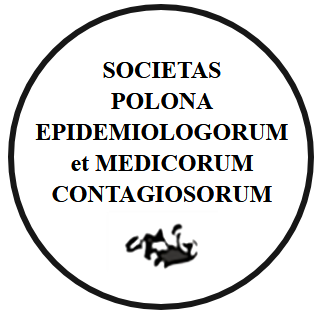ABSTRACT
INTRODUCTION. Surgical Site Infection (SSI) is the most common clinical form of Healthcare-Associated Infections (HAI) in orthopedic and trauma wards.
MATERIAL AND METHOD. A retrospective study was conducted at the Department of Orthopedics and Trauma Surgery in Tarnów in 2012-2018. 3 155 patients treated for bone fractures were analyzed, including 1961 Open Reduction of Fracture (FX) and 1 194 Closed Reduction of Fracture with Internal Fixation (CR) surgeries. The study was conducted in accordance with the methodology recommended by the Surveillance Network (HAI-Net), European Centre for Disease Prevention and Control (ECDC). The aim of the study was to assess the incidence of SSI in patients undergoing the FX and CR procedures.
RESULTS. 28 SSIs were identified in the examined ward; 16 SSI cases related to the FX procedure and 12 cases related to CR. The incidence for FX was 0.8% and for CR 1%. In patients with diagnosed SSI, the stay in the ward was longer (p <0.001) than in patients without SSI. In FX operations, the standardized risk index (SIR) did not exceed the value of one. Staphylococcus aureus was the most common organism isolated from materials from patients with SSI.
CONCLUSIONS. In the examined period, the median age of women was higher than that of men, which may indicate a higher incidence of fractures in women. Patients with diagnosed SSI had a longer stay in the ward than patients without SSI. The incidence of SSI in FX and CR has been reduced compared to previous studies in the same ward.
STRESZCZENIE
WSTĘP. Zakażenia miejsca operowanego (Surgical Site Infection – SSI) są najczęstszą formą kliniczną zakażeń szpitalnych (Healthcare-Associated Infections – HAI) w oddziałach ortopedyczno – urazowych.
MATERIAŁ I METODY. Badanie retrospektywne zostało przeprowadzone w Oddziale Ortopedyczno-Urazowym w Tarnowie w latach 2012-2018. Analizie poddano 3 155 pacjentów leczonych z powodu złamań kości, w tym 1 961 otwartych repozycji złamania kości długich (Open Reduction of Fracture – FX) i 1 194 zamkniętych repozycji złamań kości (Closed Reduction of Fracture with Internal Fixation – CR). Badanie zostało przeprowadzone zgodnie z metodyką rekomendowaną przez Surveillance Network (HAI-Net) European Center for Disease Prevention and Control (ECDC). Celem badania była ocena zapadalności na SSI u pacjentów poddanych procedurze FX i CR.
WYNIKI. W badanym oddziale rozpoznano 28 SSI; 16 przypadków SSI związanych z procedurą FX i 12 przypadków związanych z CR. Zapadalność dla FX wynosiła 0,8%, a dla CR 1%. U pacjentów z rozpoznanym SSI pobyt w oddziale był dłuższy (p<0,001) niż pacjentów bez SSI. W operacjach FX standaryzowany indeks ryzyka (SIR) nie przekroczył wartości jeden. Najczęstszym drobnoustrojem izolowanym z materiałów pochodzących od pacjentów z SSI był Staphylococcus aureus.
WNIOSKI. W badanym okresie mediana wieku kobiet była wyższa niż mężczyzn, co może wskazywać na częstsze występowanie złamań u kobiet. Pacjenci z rozpoznanym SSI mieli dłuższy pobyt w oddziale niż pacjenci bez SSI. Zapadalność na SSI w FX i CR uległa zmniejszeniu w porównaniu z wcześniejszymi badaniami prowadzonymi w tym samym oddziale.
You can change cookies settings in your browser. Restricted use of cookies in the browser configuration may affect some functionalities of the website.





